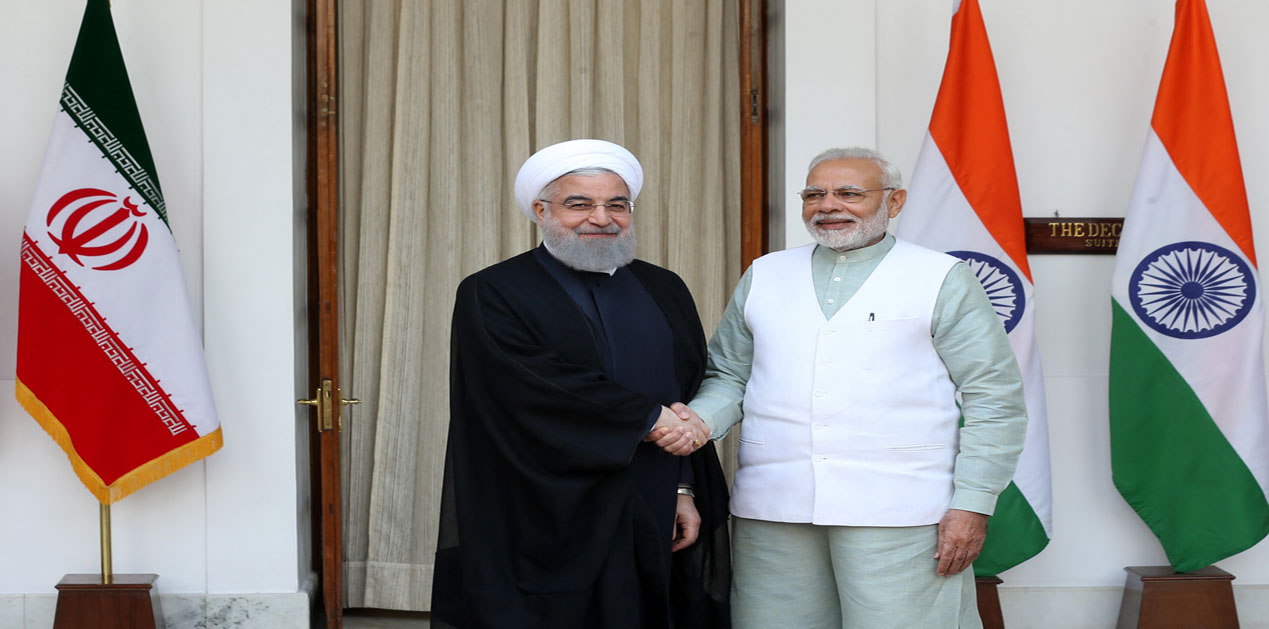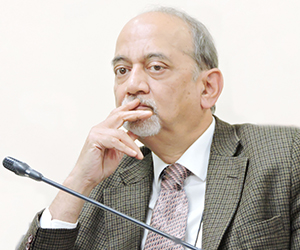President Rouhani’s visit to India from February 15-17, 2018 took place after a gap of almost 15 years, since President Khatami’s visit in 2003. In between, there was a transit visit by President Ahmadinejad in 2008. There was a long gap before the return visit was made by Indian Prime Minister on the occasion of Non-Aligned Movement Summit in 2012. The pace quickened after PM Modi took over. He visited Tehran in 2016, and extended an invitation to President Rouhani to visit India.
The visit took place against the background of worsening situation in Afghanistan. The attack in Kabul on 27th January resulted in the death of 95 people killed and 158 were injured. The Taliban claimed responsibility for the attack. During the first half of 2017 alone, more than 1,662 civilians were killed and 3,581 more injured, according to a report by the UN Assistance Mission in Afghanistan (UNAMA).
Tensions between the two sides of the Gulf have increased. The Gulf Co-operation Council (GCC) has been weakened by the Saudi – Qatar spat. The war in Yemen remains undecided. President Bashar Al-Asad’s position has stabilized in Syria after Russian intervention. The ISIS, which was on the ascendant in 2014-15, has lost territory both in Iraq and Syria. There are fresh uncertainties about the US position on the nuclear deal, though it has survived so far. Iran has recovered its pre-sanction level of oil exports.
India has consolidated her historical relations with countries on both sides of the Gulf. PM had visited Saudi Arabia in 2016. He recently made second tour of Arab countries, including UAE, Palestine and Oman. The UAE Crown Prince was the Guest of Honour in the Republic Day ceremony last year.
The joint statement issued at the end of President Rouhani’s visit called for reaching an early agreement on Comprehensive Convention on International Terrorism. Both sides endorsed Iranian initiative on ‘World Against Violence and Extremism’ (WAVE) in the UN General Assembly. India and Iran also agreed that the Indian Railway Construction International Ltd (IRCON) and its Iranian counterpart will study technical parameters and financing options for Chabahar–Zahedan Railway line. The two sides reiterated their commitment to International North-South Transit Corridor (INSTC). It was also agreed to enhance the environment to attract Indian private/public sector investments in Chabahar Free Trade Zone. On Farzad-B gas field, both sides agreed to continue and increase the pace of negotiations to reach an agreement.
Apart from the Joint Statement, there were nine agreements signed during the visit of President Rouhani to India. The most important is the lease contract for Chabahar Port, Phase 1, for the interim period. This will cover the period till the 10-year contract signed earlier kicks in. An Agreement was also signed on ‘Avoidance of Double Taxation and Prevention of Fiscal Evasion’. The two sides exchanged Instrument of Ratification of Extradition Treaty signed earlier in 2008. An agreement was signed for exemption from visa requirement for diplomatic passport holders. In addition, five agreements were signed for co-operation in fields as diverse as traditional medicine, agriculture, health, postal and the establishment of an Expert Group on Trade Remedy Measures.
Chabahar is vital not only for Indian access to Afghanistan, but also our access to Central Asian Countries (Turkmenistan, Uzbekistan, Tajikistan, Kazakhstan and Kyrgyzstan). During PM Modi’s visit to these countries in July, 2015, all of them supported the project. India had built Zaranj-Delaram Road, linking the border outpost to ‘Garland Highway’ in Afghanistan. Chabahar Port will provide sea connectivity to the land route. The Port is vital not only for Indian access to Afghanistan, but also to Central Asian Countries who support the project. The Port needs hinterland connectivity. While there is a road-link, there is a need to complete the railway line. The Port is hardly 140 km from Gwadar Port in Pakistan, being developed by China. The Chinese also have presence in Chabahar Free Trade Zone, where they are building a refinery.
There is also progress on the INSTC. This route begins in Bander Abbas, and runs north to the Caspian Sea shore of Iran. There are multiple points on Iran’s northern border which are linked by road and rail to Bander Abbas. The infrastructure has already been developed. UAE and Japan were using this route even during the worst phase of sanctions to access Central Asian Republics, Russia and Afghanistan.
While there has been progress on the issue of connectivity, negotiations on Farzad-B have not reached a conclusion. India has recently signed agreement with UAE for participation in upstream oil exploration. It is in Iran’s interest to cement ties with one of its largest trading partner by giving her stake in the upstream sector. There are other signs of worry. Indian exports to Iran have steadily declined from USD 4.9 billion in 2013-14 to USD 2.379 billion in 2016-17. India’s imports have remained nearly at the same level (USD 10.3506 billion to USD 10.506 billion), widening the trade deficit.
The Joint Statement issued at the end of President Rouhani’s visit to India expressed its support for full and effective implementation of the Nuclear Deal, known as the Joint Comprehensive Plan of Action (JCPOA). However, hardening of US position on Iran nuclear deal has thrown up fresh questions. President Rouhani criticized the position in his speech at the Observer Research Foundation on 17th afternoon. The Joint Statement stressed that the interests of peace and stability in the region are best served by a strong, united, prosperous, pluralistic, democratic and independent Afghanistan, while supporting the National Unity Government in the country. Early implementation of Chabahar Agreement will be a concrete expression of their commitment to the stability of Afghanistan.
President Rouhani began his tour by a visit to Hyderabad, where he led the Friday congregation at Makkah mosque. The gesture symbolizes cultural commonalities between the two countries, as well as India’s position as a plural society. India-Iran relationship has stood the test of time. India maintained crude purchase from Iran during the worst days of sanction. PM Modi’s visit to Tehran in 2016, and President Rouhani’s visit last week, has consolidated these relations. This relationship is not aimed against third countries, nor influenced by them.
(Views expressed are of the author and do not necessarily reflect the views of the VIF)
Image Source: http://www.president.ir/en/103070











Post new comment